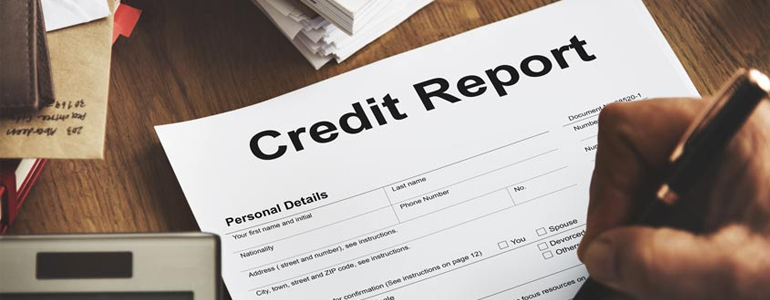If you make all your payments on time and use less than 30% of your credit limit, your credit score is almost definitely fine. The average American credit score is currently (as of January 2019) 704, which is generally regarded as “good.” It’s easy to make mistakes, though, especially when times get tight, so if you need to boost your credit score or make sure it stays high, there are a few things you’ll need to watch for on the credit reports used to calculate your FICO score. That score looks at roughly five metrics:
- On-time payment history (35%)
- Percentage of total credit used (30%)
- Average age of credit accounts (15%)
- Recent credit inquiries (10%)
- Having different kinds of credit (10%)
Even with good financial habits, keeping track of all these different variables can sometimes be difficult. Avoiding the mistakes below is quite important for keeping up your score:

Late payments: don’t make them!
What to watch for: It’s obvious, but it’s also important. Your payment history is the biggest factor in determining your credit score, and past due bills will show up on your credit report for up to seven years, with more recent debts hurting your score more. It’s not just credit cards and loans, either: late payments on rent, utilities, and other bills may also be reported. Additionally, foreclosures, bankruptcies, and bills that have gone to collections will hit this factor hard.
How to fix it: If you’ve already got some late payments on your record, your only option is to A) Make the payment, and B) Call your creditor and ask if they’d remove the late payment from your report as a goodwill gesture. It doesn’t hurt to ask, and a polite phone call can be surprisingly effective.
If you have to choose between paying down a high balance and keeping an account current, opt for the latter. High balances aren’t great for your score, but past due accounts are much worse.

High utilization: keep your lines of credit open
What to watch for: The second-most-important factor in determining your credit score is how much of your available credit you’ve used, and lower is always better. Ideally, you should use less than 30% your available credit to avoid getting dinged. The closer you get to 100%, the more your score suffers.
How to fix it: Optimally, you should decrease your spending on credit until it’s below 30%. If that’s not feasible, try opening another account to increase your credit limit and/or asking your existing creditors for a credit limit increase. If your score is currently decent and your history doesn’t raise any red flags except high utilization, you may be approved.

Don’t close old accounts: they’re still helping you
What to watch for: It may be tempting to tie up loose ends and close your old, paid-off accounts. In general, though, it’s best to resist that urge. An account with zero balance just sitting around is actually good for your total available credit and average account age, so it’s a good idea to keep it.
How to fix it: If you do close an old account, it will continue to add to your average account age for another ten years, but your available credit won’t. If you have a lot of available credit or low spending, closing the card should have very little effect. The primary case where you should close an unused card is if it’s charging you annual fees. Even in that case, though, you should probably just try calling the bank and downgrading to a fee-free version of the same card.
Space out your applications
What to watch for: Applying for a few cards will ding your score a bit, but not enough to worry about. If you apply for a lot of credit all at once, though, or you have a steady stream of applications going out, it raises red flags. Negative effects from inquiries should wear off after about six months, but it’s best not to have them in the first place.
How to fix it: Space out your credit applications. Making two or three at once is no big deal, but if you want to improve your approval odds, try not to go over that. Optimally, wait a month or so between application rounds.
Not checking your credit report
What to watch for: It’s easy to access your own credit report: you can get them from the major bureaus, as well as some banks. The systems these companies use to track you aren’t flawless, and it’s totally possible that your credit is suffering from negative marks that don’t belong there.
How to fix it: Check your report regularly, and if you see something on your report that doesn’t look right, dispute it with the relevant creditor. This isn’t a very common problem, but if you’re trying to optimize your score, there’s no reason not to check.

Repairing your score: start with damage control
If your score is dropping because you’re in a bad credit situation, the first step is to get out. Here’s what you should do right away:
- Don’t let your accounts go past due: If any of your accounts are in danger of being past due, try not to let it get there. If an account is already past due it’s already a negative mark, so you can make it your second priority. A notable exception, though: if an account is past due for 180 days, it will be “charged off,” which is one of the worst possible account statuses. Avoid that.
- Pay off your high-balance/high-interest cards and loans: Start by paying off your highest-interest cards, then prioritize your accounts by which ones have the highest balance-to-limit ratio. Even if you’re under 30% total utilization, having individual cards with high balances can also impact your score. Loans hit your score less than cards, so save them for later, when you can afford to start making regular payments that will cover more than the interest.
- If any of your accounts have been charged-off or sent to collections, pay them: Since these accounts can’t really get any worse for your score than they already are, it’s safer to save them for last. You can negotiate with creditors and collections agencies to have negative marks removed or to pay less than your original balance, but only do this after you’ve paid off your other accounts.
Building your score
If you’re starting from zero or you’ve got your credit under control, it’s time to start building your score.
- Get an account to build credit: If you get rejected by major card providers, look into getting credit cards issued by stores, who often approve lower-quality candidates. If even that doesn’t work out, look for a good secured credit card. A secured card allows you to deposit money up front to act as your credit limit. The money will then be used to pay off your bills as you spend, effectively giving you a good payment record.
- Get credit where you can: Ask your landlord and utility companies to report on-time payments and look for any other regular bills you have, like your phone bill, that might look good on your report.
- Become an authorized user: If you know someone who has good credit, being an authorized user on one of their cards can actually help boost your score. You don’t even need to have access to their account or spend any money on your card; the association is enough.
- Get a co-signer: If you can’t get any creditors to accept you, asking someone with good credit to be a co-signer can help you out a lot. Co-signers agree to take on the debt if you fail to pay, though, so make sure you’re in a position where that won’t become an issue before asking.
- Build good habits: Credit scores are a long-term measurement, with negative marks not leaving your report for years and years. Find a way to ensure that your payments are on time, your utilization is low, and your report is accurate, and stick with it. If you slip up once or twice, make some phone calls and see if you can get the negative marks removed.



